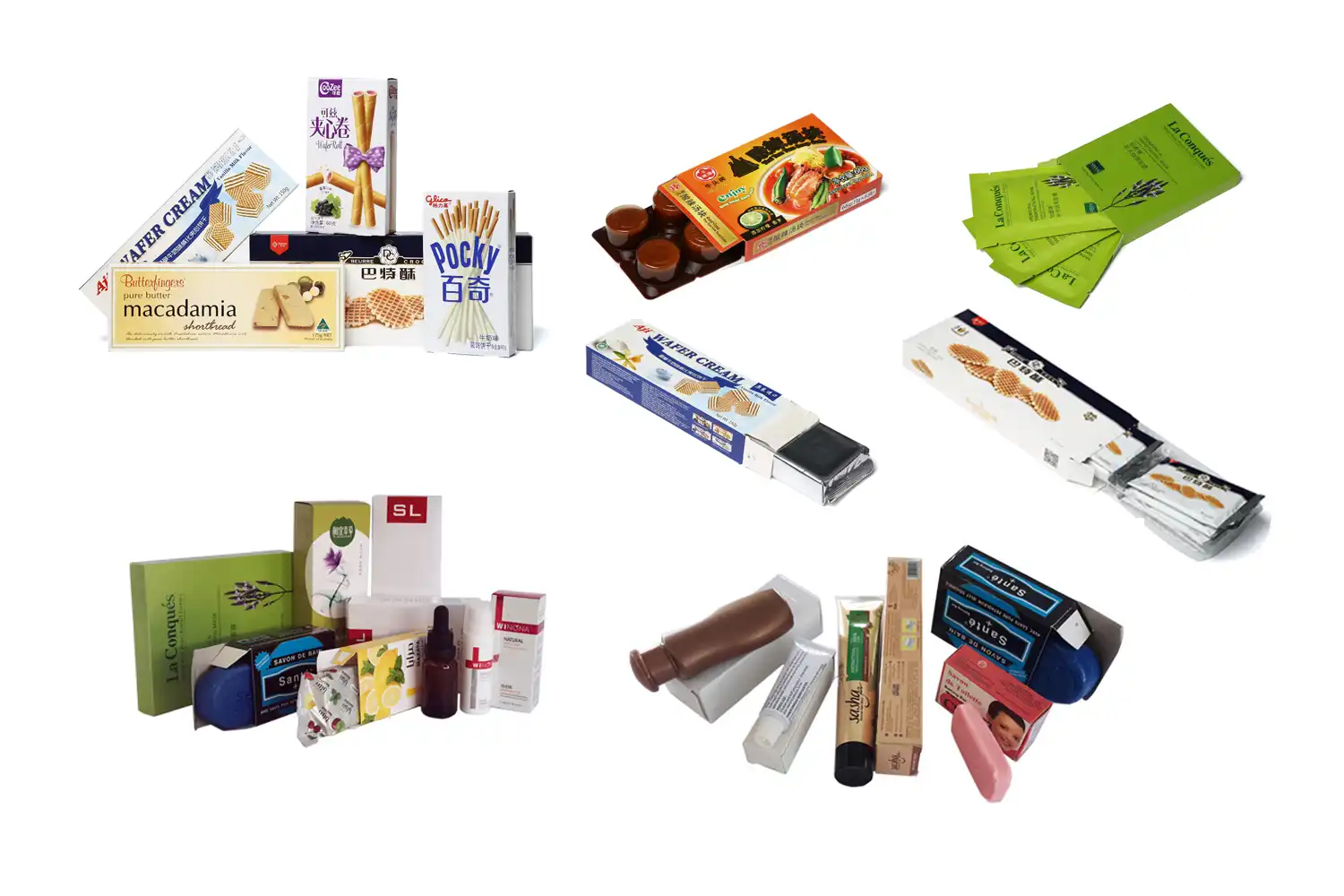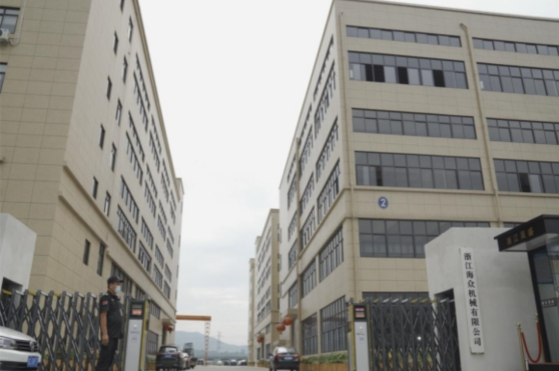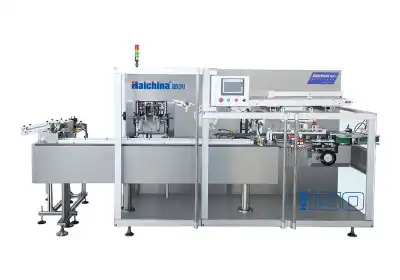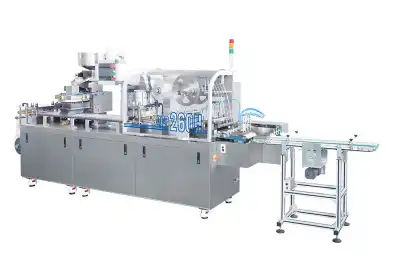How does a Chocolate Packing Machine Detect the Level of Packaging Materials?
Chocolate packing machines utilize advanced sensor technology to detect the level of packaging materials, ensuring efficient and accurate packaging processes. These machines employ various methods such as ultrasonic sensors, optical sensors, or weight-based systems to monitor the quantity of packaging materials available. The sensors continuously measure the material levels, sending real-time data to the machine's control system. When the packaging material reaches a predetermined low level, the machine triggers an alert or automatically initiates a refill process. This intelligent detection system minimizes production interruptions, reduces waste, and maintains consistent packaging quality, making it an essential feature in modern automatic cartoners and chocolate packaging lines.

The Technology Behind Packaging Material Detection in Chocolate Packing Machines
Sensor Types and Their Applications
Modern chocolate packing machines employ a variety of sensors to detect packaging material levels. Ultrasonic sensors emit high-frequency sound waves that bounce off the material surface, measuring the time it takes for the echo to return. This method is particularly effective for detecting levels in hoppers or containers. Optical sensors, on the other hand, use light beams to detect material presence or absence. These sensors are often used in conjunction with reflective surfaces to accurately gauge material levels.
Integration with Machine Control Systems
The sensors in chocolate packing machines are seamlessly integrated with the machine's control system. This integration allows for real-time monitoring and adjustment of the packaging process. The control system processes the data from the sensors and can make instantaneous decisions, such as slowing down the packaging speed if materials are running low or signaling for a refill when necessary. This level of automation ensures that the packaging process remains efficient and uninterrupted, especially when used in conjunction with an automatic cartoner.
Calibration and Maintenance of Detection Systems
To maintain accuracy, the detection systems in chocolate packing machines require regular calibration and maintenance. This involves adjusting sensor sensitivity, cleaning optical components, and updating software parameters. Proper maintenance ensures that the machine consistently detects material levels accurately, preventing false alarms or missed low-level warnings. Regular calibration also helps in adapting the system to different types of packaging materials that may be used for various chocolate products.
Advantages of Automated Material Level Detection in Chocolate Packaging
Improved Efficiency and Reduced Downtime
Automated material level detection significantly enhances the efficiency of chocolate packaging operations. By constantly monitoring packaging material levels, these systems prevent unexpected stoppages due to material depletion. This proactive approach allows operators to plan refills during scheduled breaks or shift changes, minimizing production interruptions. The result is a smoother, more continuous packaging process that maximizes machine uptime and overall productivity.
Enhanced Quality Control and Consistency
Maintaining consistent packaging material levels is crucial for ensuring product quality. Automated detection systems help maintain this consistency by alerting operators or initiating refills before material levels become critically low. This prevents scenarios where insufficient packaging material might lead to improperly sealed or partially filled packages. By ensuring a steady supply of packaging materials, these systems - especially when integrated with an automatic cartoner - contribute to maintaining high quality standards and reducing product rejections due to packaging errors.
Cost Savings and Waste Reduction
Implementing automated material level detection in chocolate packing machines leads to significant cost savings. By preventing unexpected machine stoppages, companies can avoid the expenses associated with production delays and wasted products. Additionally, these systems help in optimizing inventory management by providing accurate data on material consumption rates. This allows for more precise ordering and storage of packaging materials, reducing overstock situations and minimizing waste due to expired or damaged materials.
Future Trends in Packaging Material Detection for Chocolate Production
Integration of Artificial Intelligence and Machine Learning
The future of packaging material detection in chocolate production lies in the integration of artificial intelligence (AI) and machine learning (ML) technologies. These advanced systems will be capable of learning from historical data to predict material consumption rates more accurately. AI-powered detection systems could anticipate peak production periods and adjust material ordering schedules automatically. This predictive capability will further streamline the packaging process, reducing human intervention and improving overall efficiency.
Enhanced Connectivity and IoT Integration
As the Internet of Things (IoT) continues to evolve, packaging material detection systems in chocolate packing machines will become more connected. These systems will be able to communicate directly with suppliers, automatically placing orders when materials run low. IoT integration will also enable remote monitoring and troubleshooting of detection systems, allowing technicians to diagnose and sometimes resolve issues without being physically present at the production site. This increased connectivity, especially when integrated with an automatic cartoner, will lead to more responsive and flexible packaging operations.
Sustainable Packaging Solutions and Detection Adaptability
With the growing focus on sustainability, chocolate manufacturers are increasingly adopting eco-friendly packaging materials. Future material detection systems will need to be highly adaptable to work with these new materials, which may have different properties than traditional packaging. Detection technologies will evolve to accurately measure and monitor a wider range of sustainable materials, including biodegradable films and recycled content packaging. This adaptability will be crucial in supporting the industry's shift towards more environmentally responsible packaging solutions.
Conclusion
The ability of chocolate packing machines to detect packaging material levels is a critical feature that significantly enhances production efficiency and quality control. By employing advanced sensor technologies and integrating them with sophisticated control systems, these machines ensure a continuous and smooth packaging process. As the industry evolves, we can expect to see even more advanced detection systems incorporating AI, IoT, and sustainable packaging solutions, further revolutionizing the chocolate packaging industry and setting new standards for efficiency and quality.
Contact Us
To learn more about our innovative chocolate packing machines and automatic cartoners, or to discuss how our packaging solutions can benefit your production line, please contact us at [email protected]. Our team at Zhejiang Haizhong Machinery Co., Ltd. is ready to assist you in optimizing your chocolate packaging processes with our state-of-the-art equipment.
References
Smith, J. (2022). Advancements in Chocolate Packaging Technology. Journal of Food Processing and Packaging, 45(3), 112-125.
Brown, A. et al. (2021). Sensor Technologies in Modern Food Packaging Equipment. International Journal of Packaging Science and Technology, 18(2), 78-92.
Johnson, M. (2023). The Role of AI in Optimizing Packaging Material Usage. AI in Manufacturing Quarterly, 7(1), 45-58.
Lee, S. and Park, H. (2022). IoT Applications in Food Packaging Industry: A Comprehensive Review. Smart Manufacturing and Industry 4.0, 33(4), 201-215.
Garcia, R. (2023). Sustainable Packaging Solutions for Confectionery Products. Green Packaging Innovations, 12(2), 67-80.
Thompson, E. (2021). Quality Control in Automated Chocolate Packaging Systems. Food Quality and Safety Journal, 29(3), 156-170.

Submit the form now to get a unique quote!

ZHEJIANG HAIZHONG MACHINERY CO., LTD.
Popular Blogs
-
 Successful caseProducts and services
Successful caseProducts and servicesHow to Train Employees to Operate a Bottle Packing Machine Effectively?
-
 Successful caseIndustry insights
Successful caseIndustry insightsThe Blister Packaging Process: A Complete Step-by-Step Guide
-
 Successful caseComparative analysisIndustry insights
Successful caseComparative analysisIndustry insightsWhat Type of PVC Is Best for Blister Packing Machines?